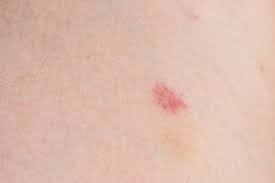If you’ve ever seen someone with petechiae, you know how concerned they can look. These small red dots on the skin can be a symptom of many different health conditions, from a common cold to something much more serious like meningitis. If you’re seeing petechiae on your skin or on the skin of someone close to you, it’s important to seek healthcare immediately.
At the hospital, the team of healthcare professionals works to determine the cause of the petechiae and provide treatment as needed. In the section below, we will discuss some of the potential symptoms of petechiae.
Let’s get started.
What is Petechiae?
Petechiae is the medical term for small, red or purple dots that appear on your skin. They occur when tiny blood vessels, called capillaries, break and bleed under the skin. Petechiae are flat to the touch and don’t blanch when you press on them.
Petechiae usually appear on your face, neck, chest and lower legs. However, they can occur anywhere on your body, including inside your mouth and on your eyelids. Petechiae may look like a rash and can be mistaken for other conditions, such as hives or eczema.
While petechiae may be benign (not harmful), they can also be a sign of a more serious underlying condition, such as a blood disorder or internal bleeding. To know more about this disease, you can go to the site AskApollo.
What are the Causes of Petechiae
Chronic diseases:
- Cancer
- Leukemia
- HIV/AIDS
- Thrombocytopenia (low platelet count)
There are also a number of other chronic diseases that can lead to the development of Petechiae. If you have any chronic health condition, it’s important to be aware of this symptom and to bring it up with your doctor.
In some cases, Petechiae may also be a sign of a more serious underlying condition such as meningitis or sepsis. If you experience any other symptoms along with Petechiae, it’s important to seek medical attention right away.
Infections:
Infections are a common cause of petechiae. For example, viral infections such as the flu can cause petechiae. Other types of infections that can cause petechiae include:
- Strep throat
- Meningococcal disease
- Endocarditis
- Mononucleosis
- Typhoid fever
- Scarlet fever
Other factors:
Other factors that can cause petechiae include:
- Coughing
- Vomiting
- Excessive crying or straining
- Childbirth
- Severe sunburn
In some cases, petechiae may be a sign of a more serious underlying condition such as:
- Thrombocytopenia (low platelet count)
- Vascular disorders
- Leukemia
- Certain autoimmune disorders
Vitamin K deficiency
Vitamin K is important for blood clotting. If you don’t have enough vitamin K, you may develop petechiae. Vitamin K deficiency is treated and by eating foods rich in vitamin K, such as leafy green vegetables.
If you have petechiae, it’s important to find out what’s causing them. In some cases, they may be a symptom of another health condition, such as leukemia or a blood disorder. If you have petechiae, see your doctor to find out what’s causing them and get treatment.
Symptoms of Petechiae
Petechiae can occur on their own or be a symptom of another health issue. If you have petechiae, you may notice:
- Purple, red, or brown spots on your skin that are about the size of a pinhead
- Spots that appear in clusters and look like a rash
- Spots that show up on your mucous membranes, such as inside your mouth or on your eyelids
- Petechiae that don’t fade when you press on them
If you have petechiae, it’s important to see a healthcare provider to rule out any underlying causes. Petechiae can sometimes be a sign of something serious, such as blood clotting disorders or leukemia. In some cases, petechiae may go away on their own without treatment.
When to See a Doctor?
If you have petechiae, it’s important to see a healthcare provider right away. Petechiae can be a symptom of another serious health issue, such as leukemia or meningitis. If you have petechiae, your healthcare provider will likely order tests to check for these and other underlying conditions.
Treating the underlying condition is the best way to treat petechiae. In some cases, such as when petechiae are caused by an infection, they may go away on their own with time and treatment of the infection. However, if petechiae are caused by a more serious condition like leukemia, hospitalization and aggressive treatment may be necessary.
The Bottom Line
Petechiae are a symptom of an underlying health condition and are not a disease in and of themselves. If you have petechiae, it’s important to see a healthcare provider to determine the cause. Petechiae can be benign or indicative of a more serious condition, so it’s always best to err on the side of caution. So that healthcare provider can rule out more serious causes, be sure to give a complete medical history, including any medications you’re taking (prescription and over-the-counter) and any recent illnesses or infections. Blood tests may also be ordered.





